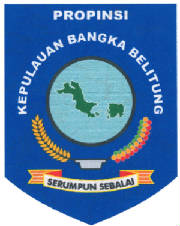Diposkan oleh
Angga Rimba
di
5:58 AM
![]()
Diposkan oleh
Angga Rimba
di
5:52 AM
![]()
Diposkan oleh
Angga Rimba
di
8:38 AM
![]()
Diposkan oleh
Angga Rimba
di
8:32 AM
![]()
Diposkan oleh
Angga Rimba
di
8:23 AM
![]()
Diposkan oleh
Angga Rimba
di
8:20 AM
![]()
- Indonesia kebangsaanku,
- Bangsa dan tanah airku,
- Marilah kita berseru,
- Indonesia bersatu.
- Refrain :
- Indonesia Raya,
- Merdeka, merdeka,
- Tanahku, neg'riku yang kucinta!
- Indonesia Raya,
- Merdeka, merdeka,
- Hiduplah Indonesia Raya.
Diposkan oleh
Angga Rimba
di
5:25 AM
![]()

Diposkan oleh
Angga Rimba
di
5:18 AM
![]()

Diposkan oleh
Angga Rimba
di
5:16 AM
![]()
Diposkan oleh
Angga Rimba
di
5:13 AM
![]()




Diposkan oleh
Angga Rimba
di
5:12 AM
![]()



Diposkan oleh
Angga Rimba
di
5:07 AM
![]()
The Lesser Sunda Islands consist of two geologically distinct archipelagos.The northern archipelago, which includes Bali, Lombok, Sumbawa, Flores and Wetar, is volcanic in origin, a number of these, like Mount Rinjani on Lombok, are still active while others, such as Kelimutu on Flores with its three multi-coloured crater lakes, are extinct. It began to be formed during the Pliocene, about 15 million years ago, as a result of the collision between the Australian and the Asian plates. The islands of the southern archipelago, including Sumba, Timor and Babar, are non-volcanic and appear to belong to the Australian plate. The geology and ecology of the northern archipelago share a similar history, characteristics and processes with the southern Maluku Islands, which continue the same island arc to the east.


Diposkan oleh
Angga Rimba
di
5:04 AM
![]()

Diposkan oleh
Angga Rimba
di
4:59 AM
![]()

Diposkan oleh
Angga Rimba
di
4:52 AM
![]()

Diposkan oleh
Angga Rimba
di
4:48 AM
![]()


Diposkan oleh
Angga Rimba
di
4:44 AM
![]()

Diposkan oleh
Angga Rimba
di
4:35 AM
![]()

Diposkan oleh
Angga Rimba
di
4:31 AM
![]()
